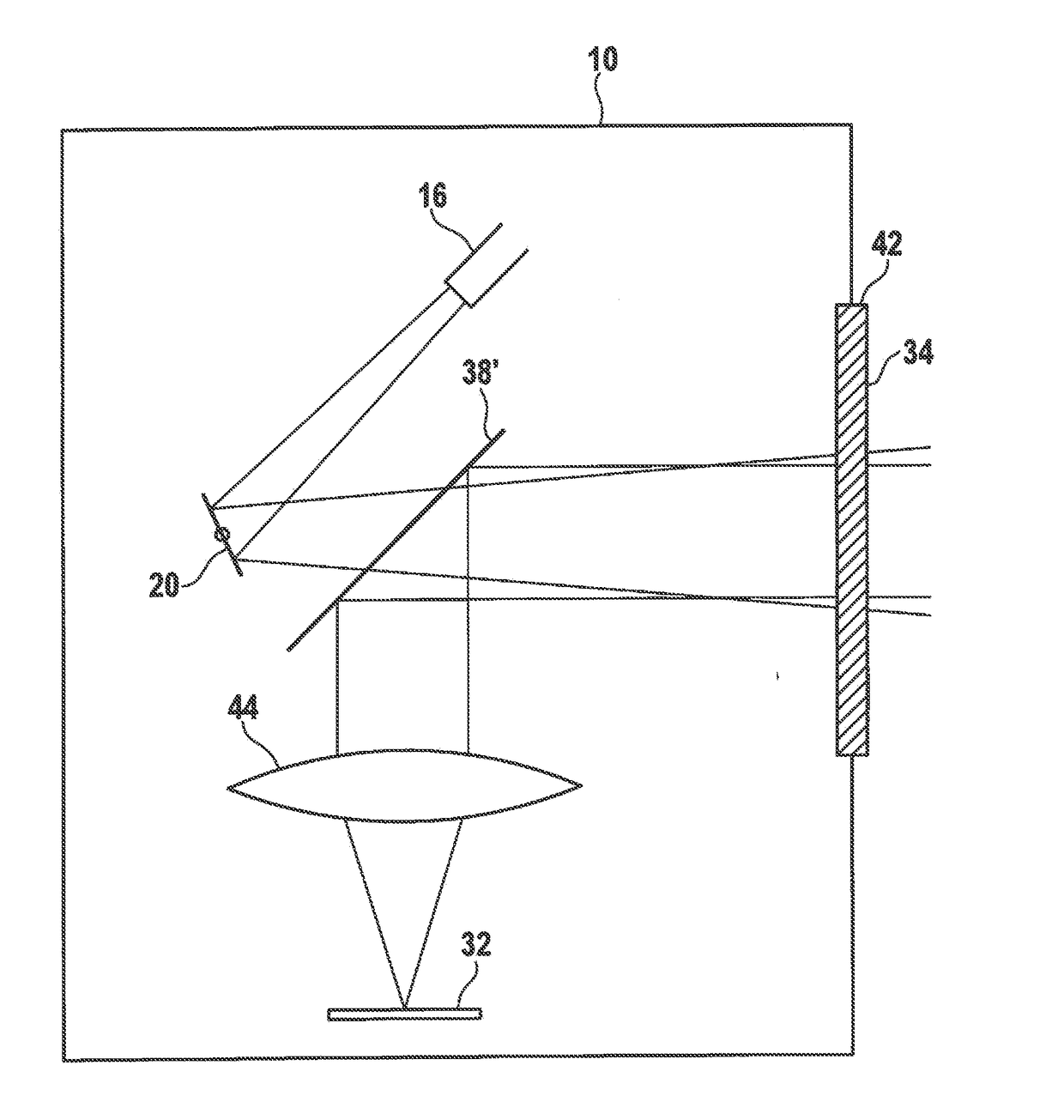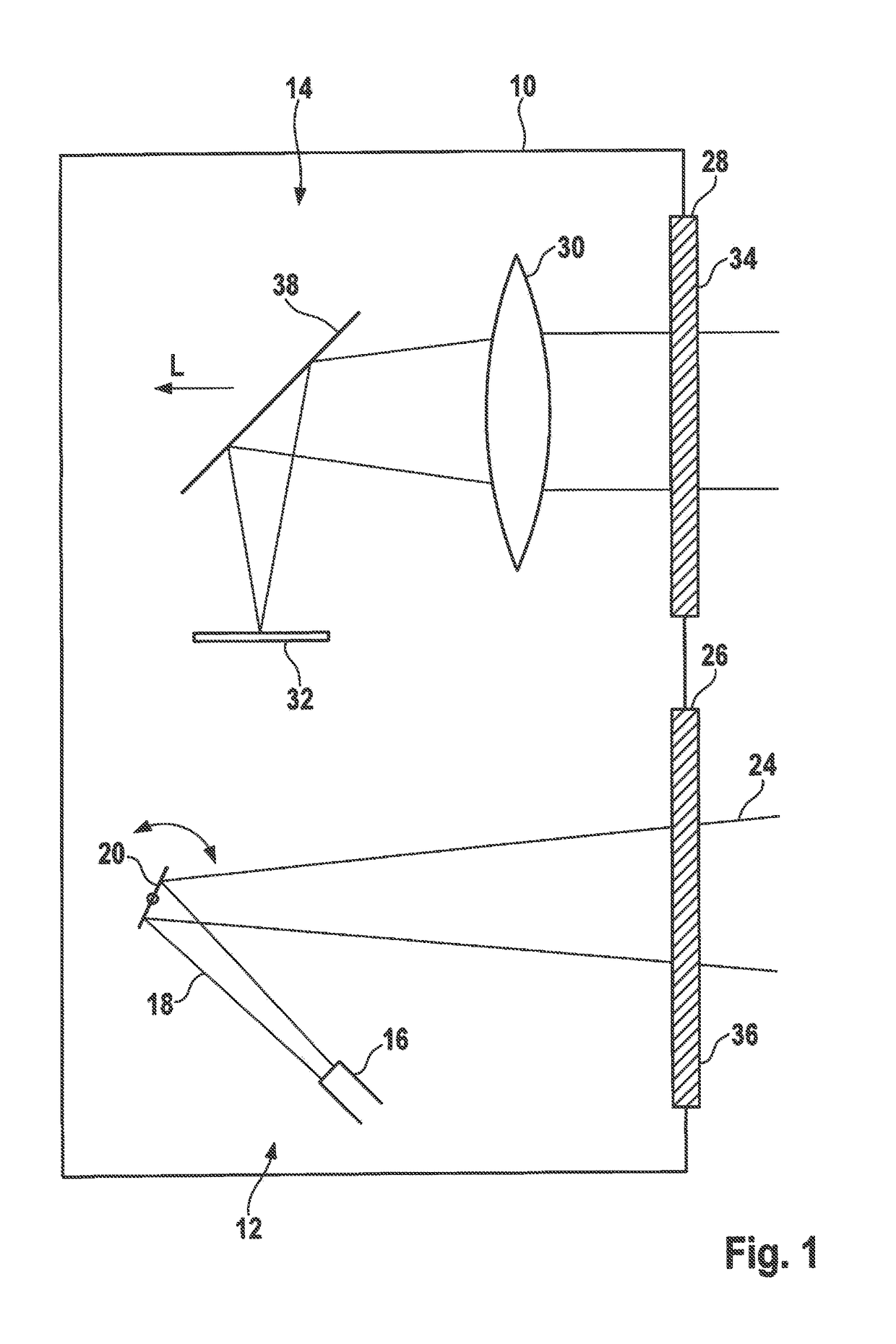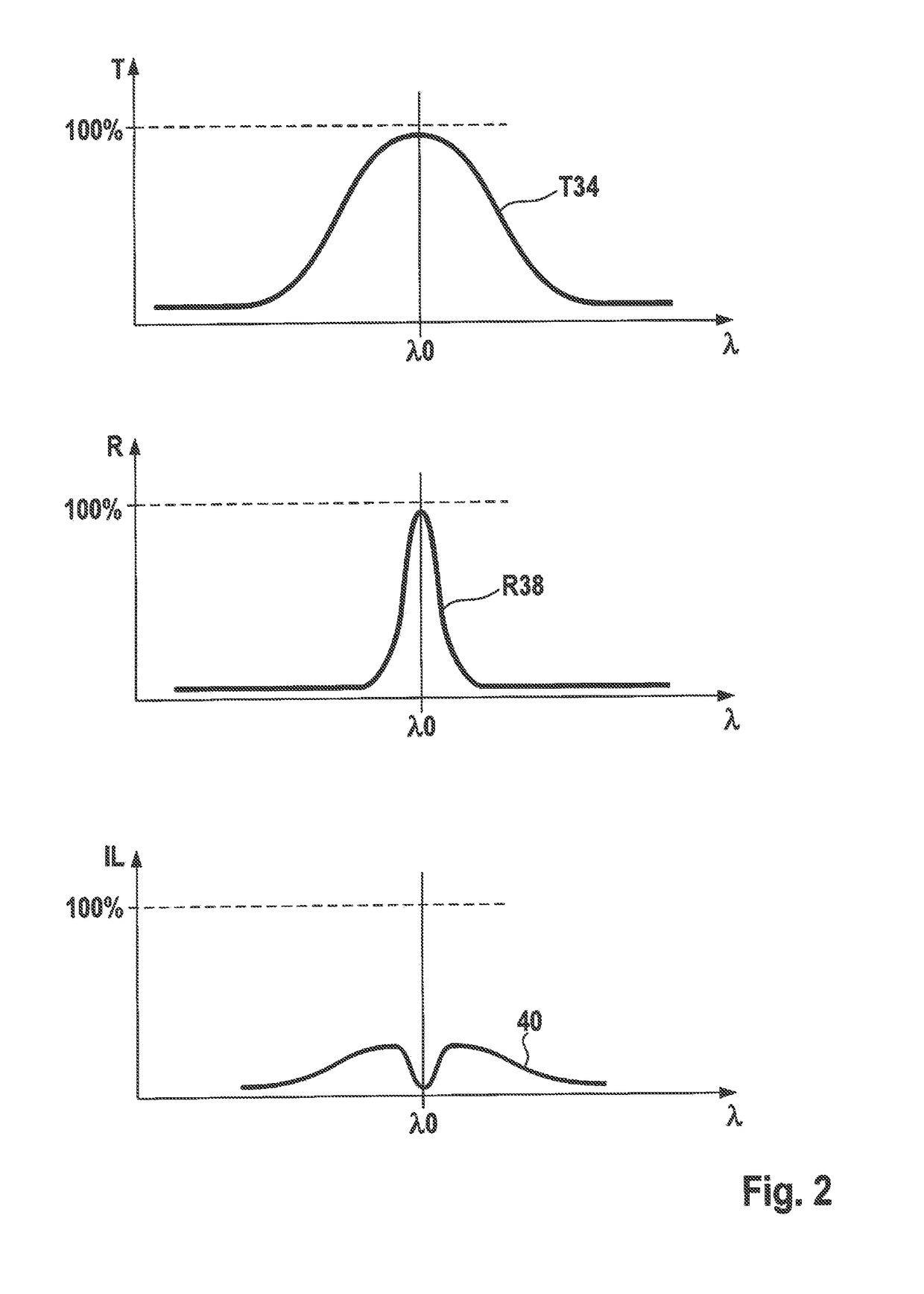Lidar sensor including an optical filter
a technology of optical filter and lidar sensor, which is applied in the field of lidar sensor, can solve the problems of limiting the sensitivity of lidar sensor, limiting the energy content of radiation component, and high optical quality of transmission filter, and achieves the effect of high sensitivity
- Summary
- Abstract
- Description
- Claims
- Application Information
AI Technical Summary
Benefits of technology
Problems solved by technology
Method used
Image
Examples
Embodiment Construction
[0018]The LIDAR sensor shown in FIG. 1 has a housing 10, which accommodates a sending part 12 (below in FIG. 1), and a receiving part 14 (above) formed separately from the sending part.
[0019]Sending part 12 has a beam source 16, which is, for example, formed by a semiconductor laser, and emits a bundled beam 18 of laser light having a sharply defined useful wavelength λ0 onto a deflection mirror 20 which deviates in an oscillating manner. The light deflected on deflection mirror 20 exits housing 10 through an exit window 26 as scanning beam 24. Deflection mirror 20 deviates scanning beam 24 periodically in such a way that it scans a certain locating range.
[0020]The light reflected from objects in the locating range re-enters housing 10 through entrance window 28 and is focused by a lens 30 onto an optoelectronic receiver 32, which is formed, for example, by a CCD field. Based on the incidence location of the light on receiver 32, it is possible to determine the locating angle of the...
PUM
 Login to View More
Login to View More Abstract
Description
Claims
Application Information
 Login to View More
Login to View More - R&D
- Intellectual Property
- Life Sciences
- Materials
- Tech Scout
- Unparalleled Data Quality
- Higher Quality Content
- 60% Fewer Hallucinations
Browse by: Latest US Patents, China's latest patents, Technical Efficacy Thesaurus, Application Domain, Technology Topic, Popular Technical Reports.
© 2025 PatSnap. All rights reserved.Legal|Privacy policy|Modern Slavery Act Transparency Statement|Sitemap|About US| Contact US: help@patsnap.com



